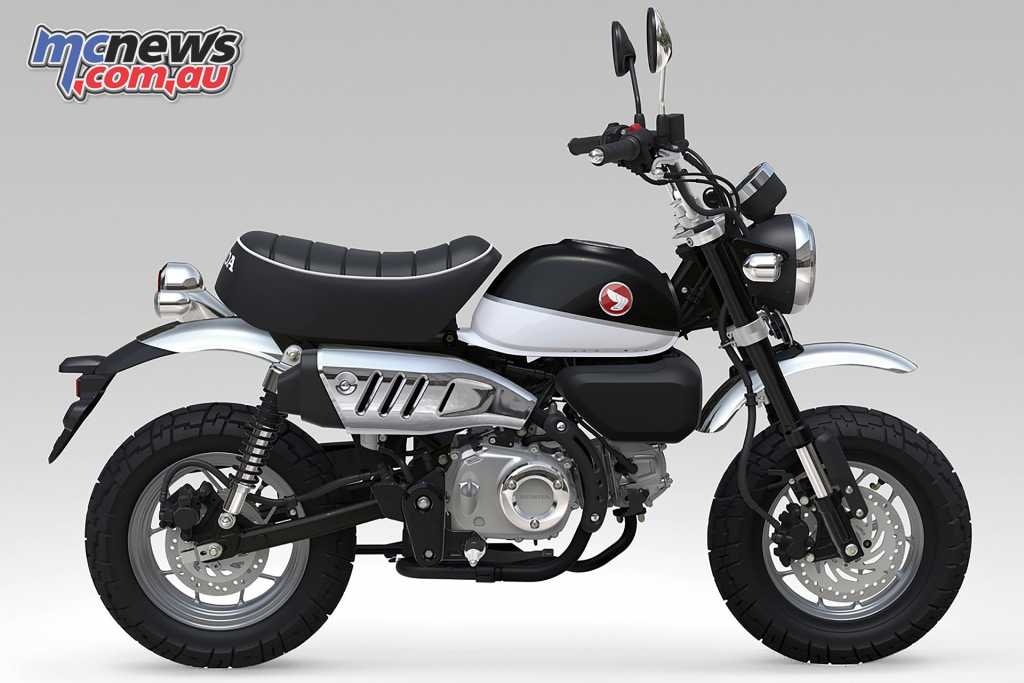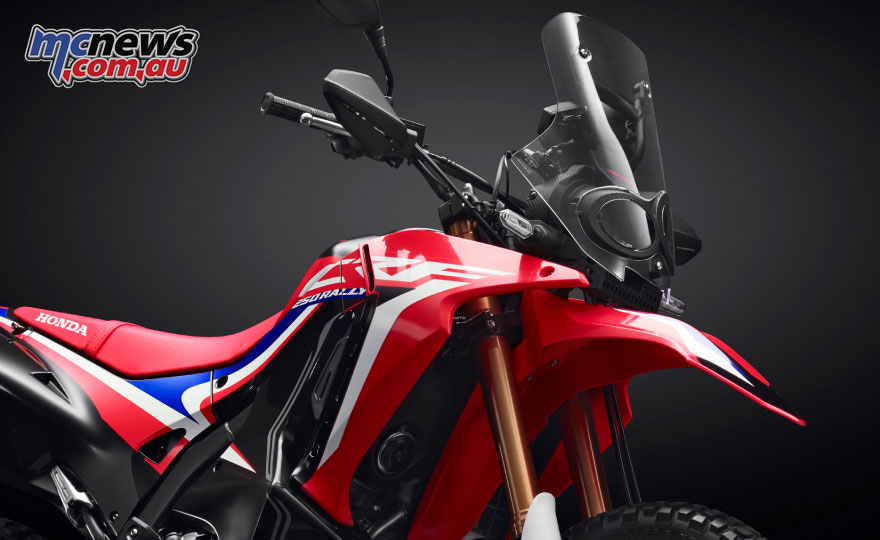Honda’s iconic mini-bike re-imagined for 2018
2018 Honda Monkey 125
The new 2018 Honda Monkey Bike 125 will be available in Australia this July and will retail from $5,999 Ride Away.
Colours available Down Under will include Banana Yellow, Pearl Nebula Red, Pearl Glittering Blue and Pearl Shining Black.
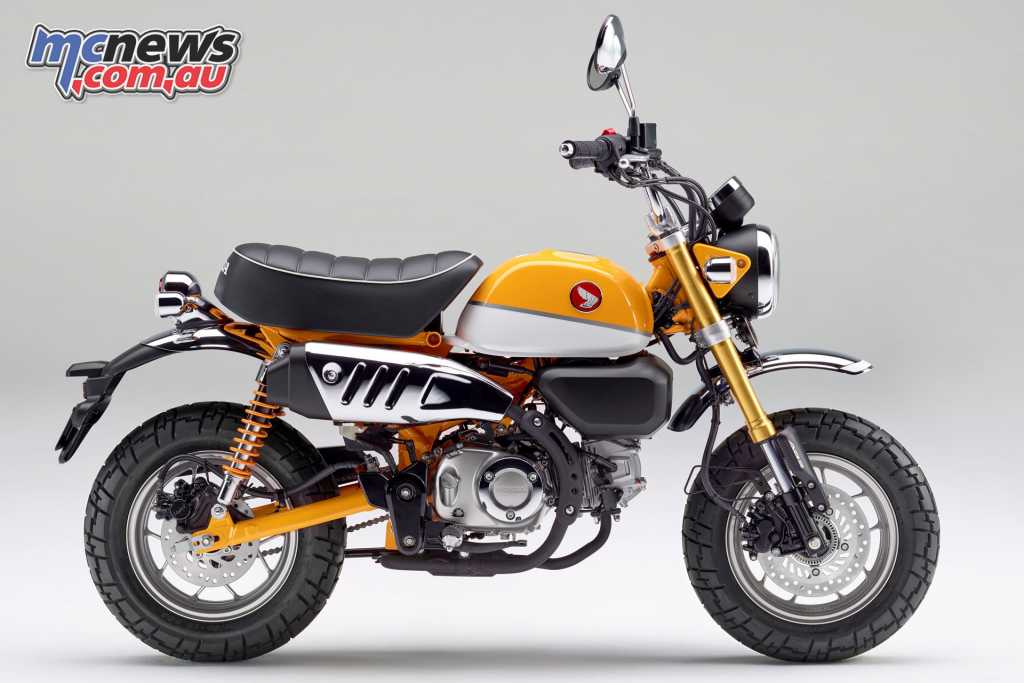
Honda’s iconic 125 cc mini-bike has been re-imagined with styling that draws heavily on the original, complemented by modern touches such as USD forks, twin rear shocks, LCD instruments, IMU-based ABS and full LED lighting. An 125cc air-cooled engine delivers 6.9kW power and fuel efficiency of 67km/litre, while wet weight is a mere 107kg. If you are brave enough the Honda Monkey bikes’ top speed should be over 80 km/h
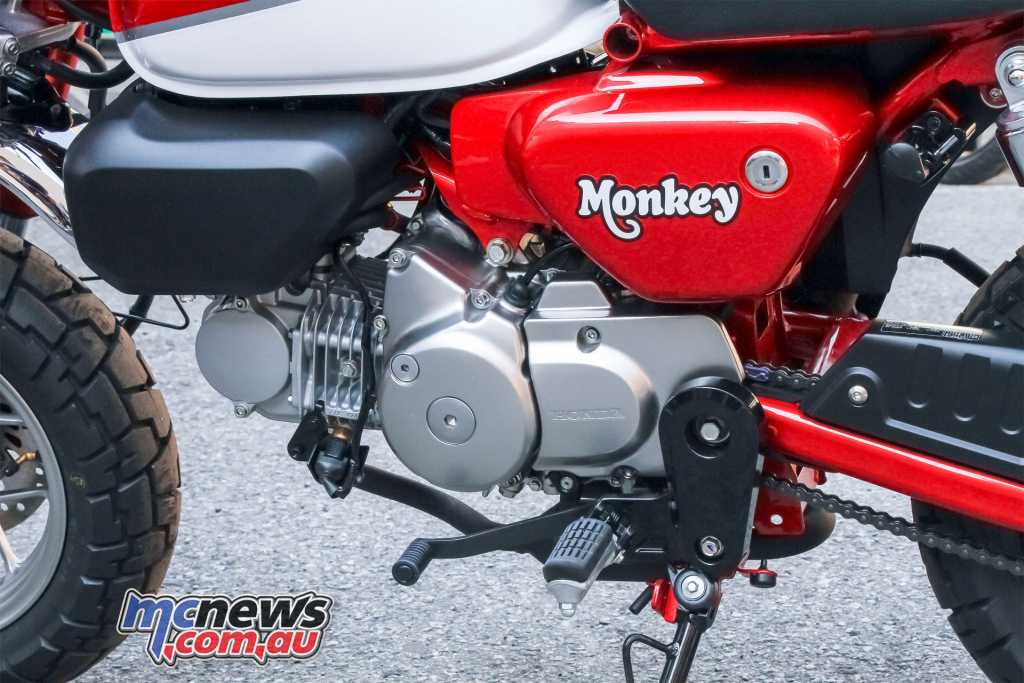
2018 Honda Monkey 125 Features
- Styling, paint and chromed parts draw heavily on the original
- 125cc air-cooled engine
- 6.9kW power
- 11Nm torque
- 67km/l mileage
- Steel frame
- USD forks
- Twin rear shocks
- 12-inch diameter tyres
- Wet weight – 107kg
- Wheelbase – 1155mm
- Seat height – 775mm
- Premium LED lighting
After the modern-day success of the Grom, which proved the desire for a funky, pocket-sized town run-around, it was time for the Monkey name to return.
The glossy 5.6L fuel tank, finished in the same paint colour as the frame, swing arm and rear shocks, crowns the machine, and proudly wears a historical 3-D Old Wing design logo. Chromed steel high-level front and rear mudguards – plus the evocatively-stamped exhaust shield, circular mirrors and high-rise handlebars – all pay homage to the original.
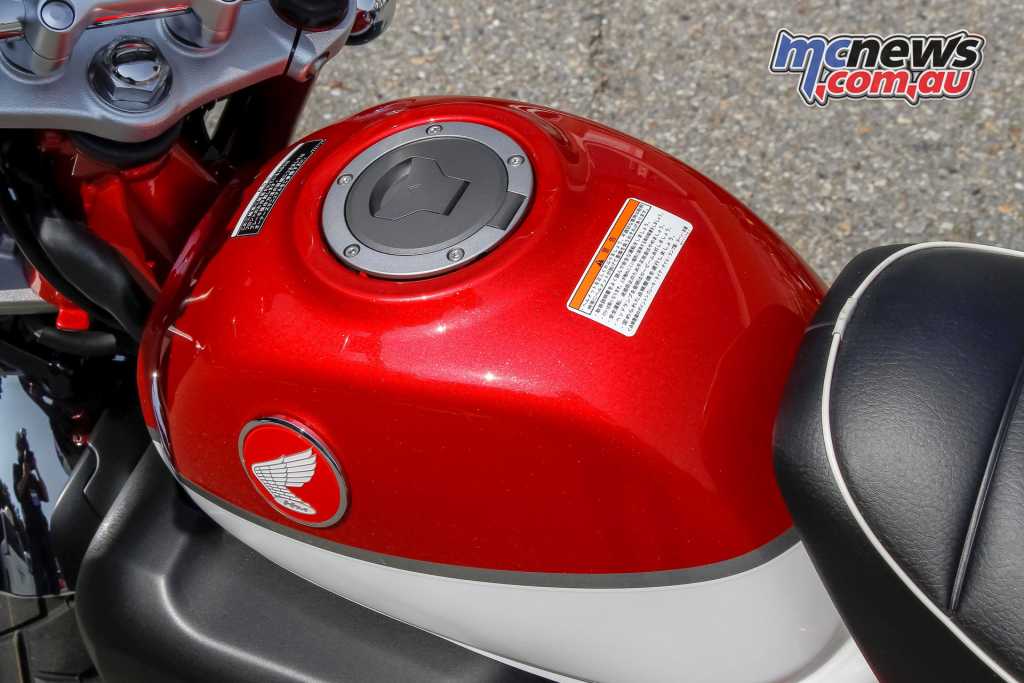
As for the power unit, true to its origins, the Monkey’s horizontal SOHC 125cc single-cylinder engine is simple, robust and tuned to deliver useful about-town performance. Air-cooled, with bore and stroke of 52.4 x 57.9mm and compression ratio of 9.3:1, fed by PGM-FI, it produces 6.9kW at 7000rpm and 11Nm at 5250rpm. The gearbox is 4-speed and the engine returns fuel economy of 67km/l (WMTC mode).
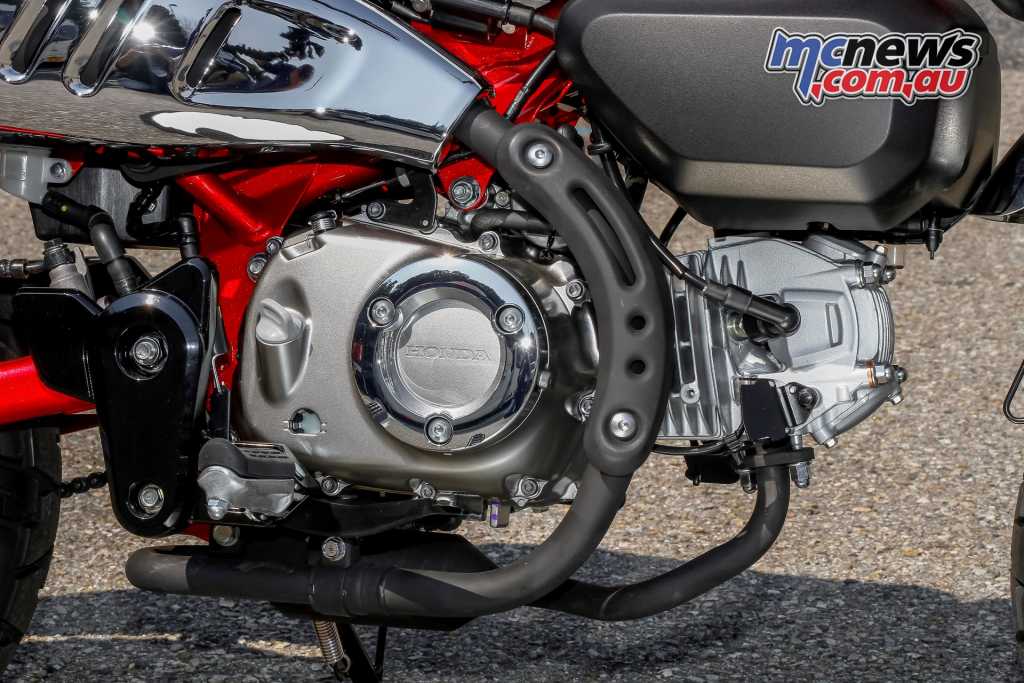
The steel backbone frame is joined by an oval cross section swingarm, with an overall wheelbase of 1155mm. Rake and trail are 25°/82mm and a minimum turning radius of just 1.9m makes for maneuverability. Wet weight is a mere 107kg, with a seat height of 775mm. The seat is made of plush high-density urethane for comfort.
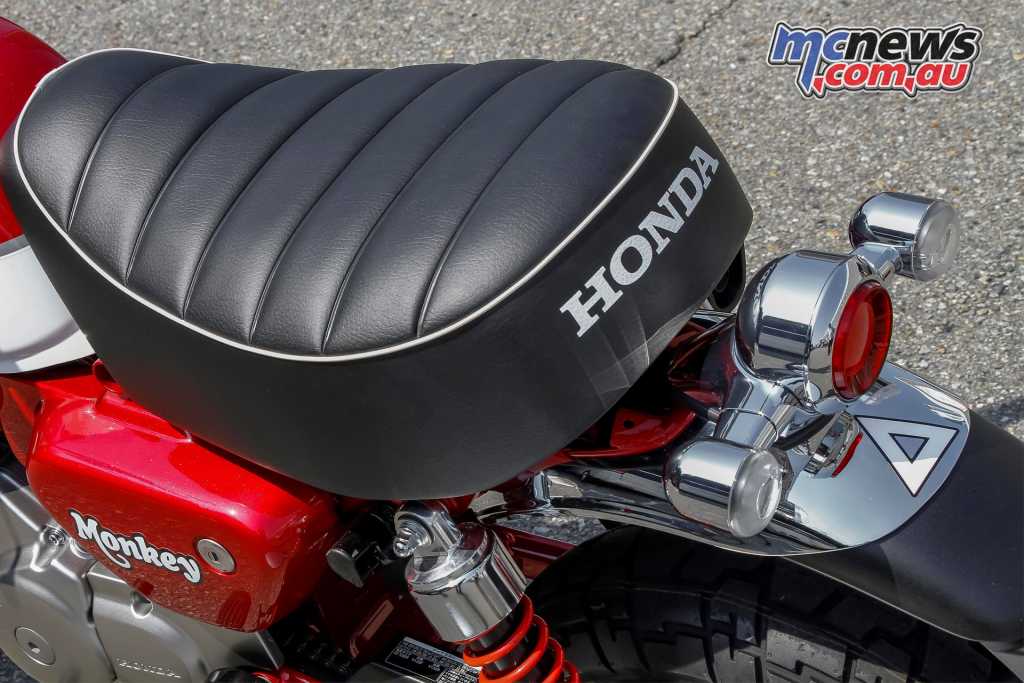
USD front forks wear a premium Alumite finish and are matched by dual rear shocks with 104mm of axle travel. Maximum ground clearance is 160mm. A single 220mm front disc and 190mm rear provide secure stopping performance, managed by the IMU-based ABS. Fat 12-inch block pattern tyres make for a smooth ride and are sized 120/80-12 65J front and 130/80-12 69J rear.
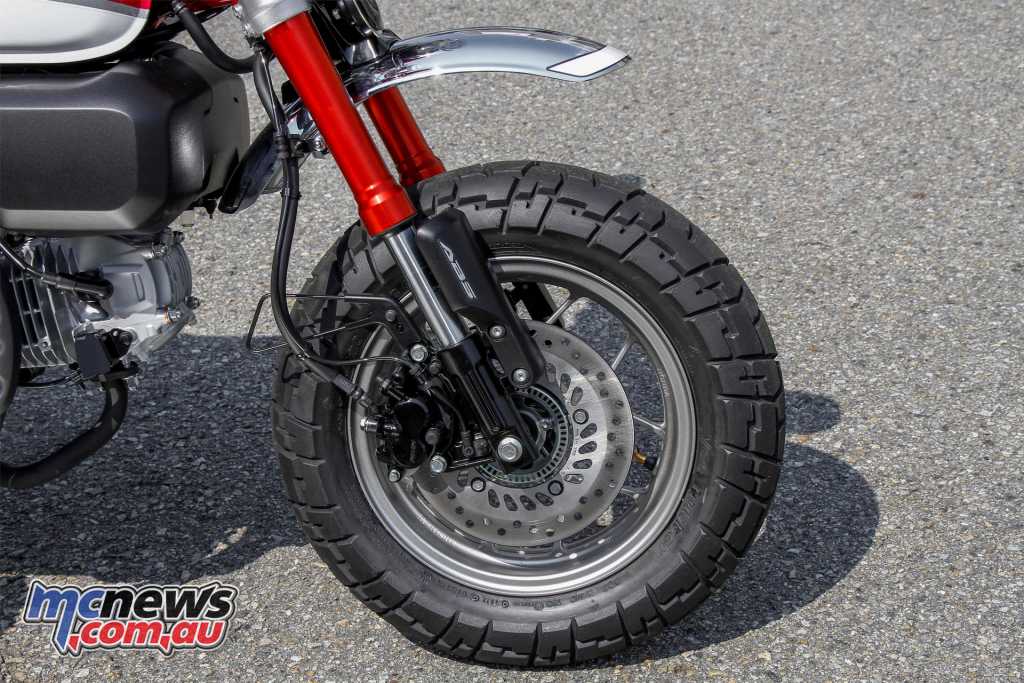
A circular LCD binnacle features speedometer, and odometer with two trip meters and six-segment fuel level indicator. All lighting is LED; the ‘wave’ pattern key (which also wears the Old Wing motif) features an ‘answer back’ system that makes the lights flash at the push of a button to allow easy location in crowded car parks. The single channel ABS system operates with an IMU to mitigate rear ‘lift’ under strong braking, are you serious! LOL
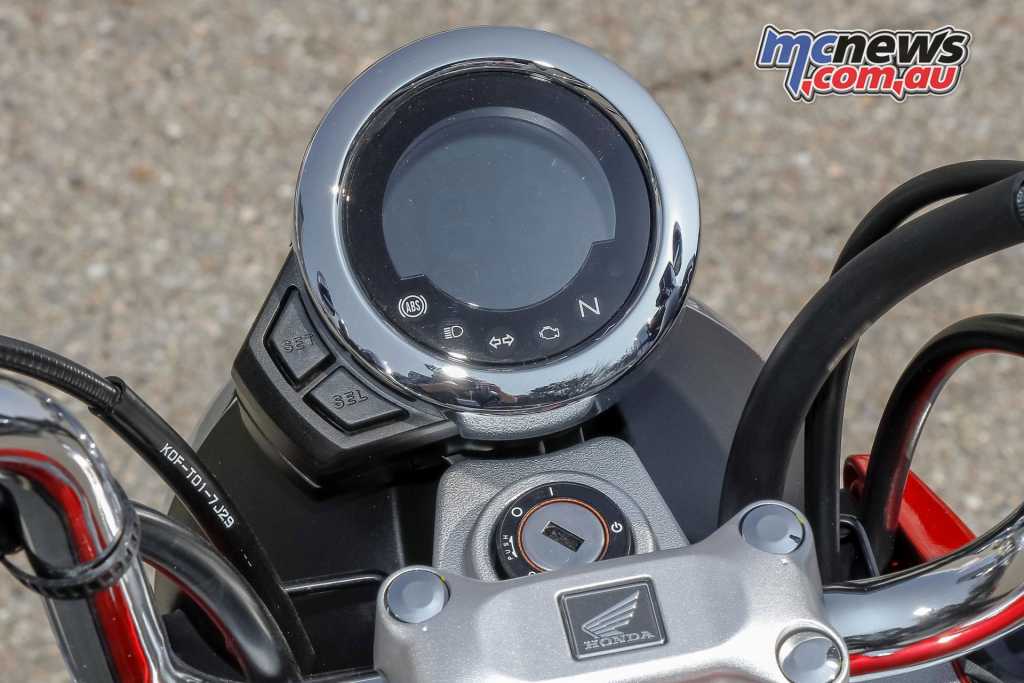
The 2018 Monkey 125 will be available in three colour schemes
- Banana Yellow/Ross White
- Pearl Nebula Red/Ross White
- Pearl Shining Black/Ross White
Honda Australia is yet to set the price for the new Monkey Bike but expects to do so shortly. First deliveries are expected to arrive around June-July.
History of the Honda Monkey 125 bike
The Monkey bike is perhaps most widely known as a groovy icon of the 1970s, but it first saw the light of day in 1961. Originally developed as a 49cc child’s plaything for Tama Tech, an amusement park in Tokyo, it proved so popular that a road-going version was developed, which was initially exported to America and Europe in 1963, with a distinctive chrome tank, folding handlebars and 5-inch diameter rigidly-mounted wheels.
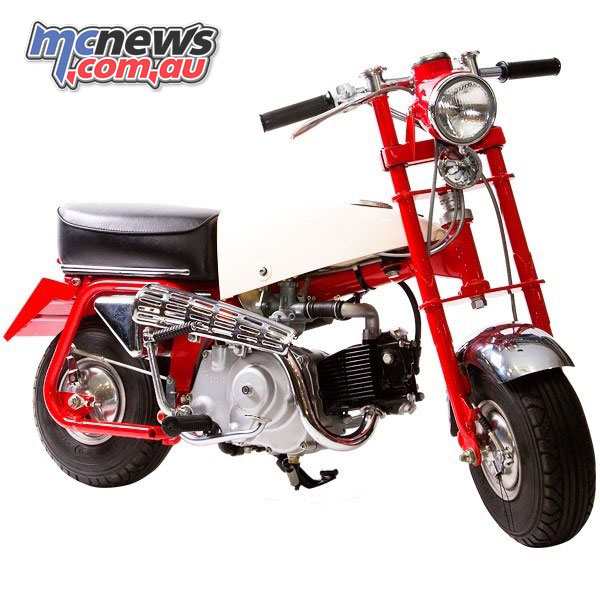
Its popularity was based on a instantly-likable design, tiny dimensions and ultra light weight – which made it a whole load of fun around town. By 1969 its wheels had increased to 8-inch in diameter and from 1970 it gained even greater popularity, when the addition of quick-detach forks meant it would fit into the trunk of a small car.
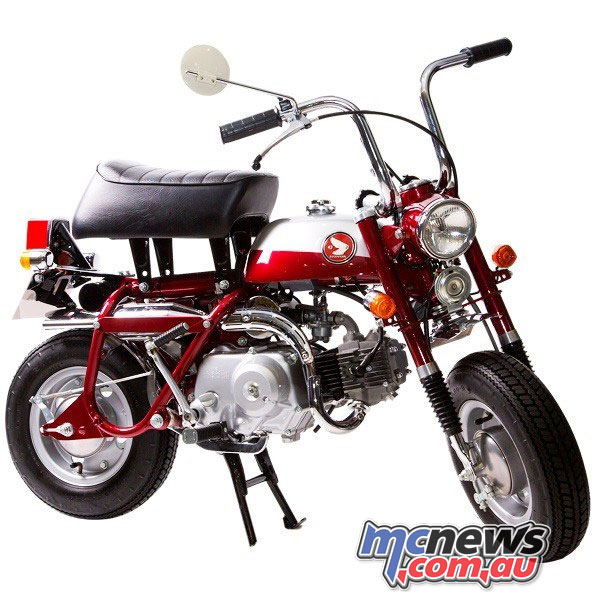
By 1978 – a point that marked the start of real prime time for the Monkey – the machine had been re-styled with a teardrop style fuel tank, and became hugely popular with legions of RV (Recreational Vehicle) drivers in need of convenient transport to use once they were parked up.
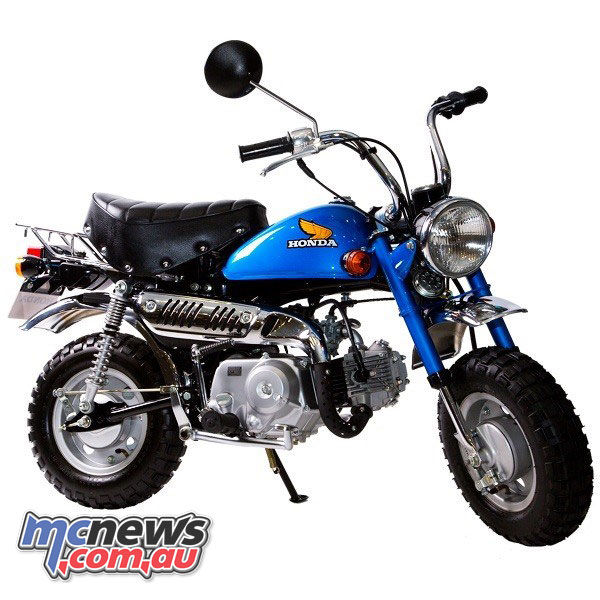
This is where and when the cheeky Monkey really cemented its place in millions of hearts; with its 3-speed gearbox and centrifugal clutch (which needed no ‘traditional’ motorcycle skill to operate) it gave thousands of riders their first experience of twisting the throttle on a powered two wheeler.
For a long time the Monkey Bike was available to Japanese consumers but to celebrate the 40th Anniversary of the Z50M Honda brought the Monkey Bike back to the Australian market, for $3490.
Styled along the lines of the original, complete with studded tartan seat, the 40th Anniversary Z50M sported special graphite black paint on the major surfaces while Anniversary logos dotted the tank and side covers. Unlike the original the Anniversary machine had a manual clutch and gearbox.
